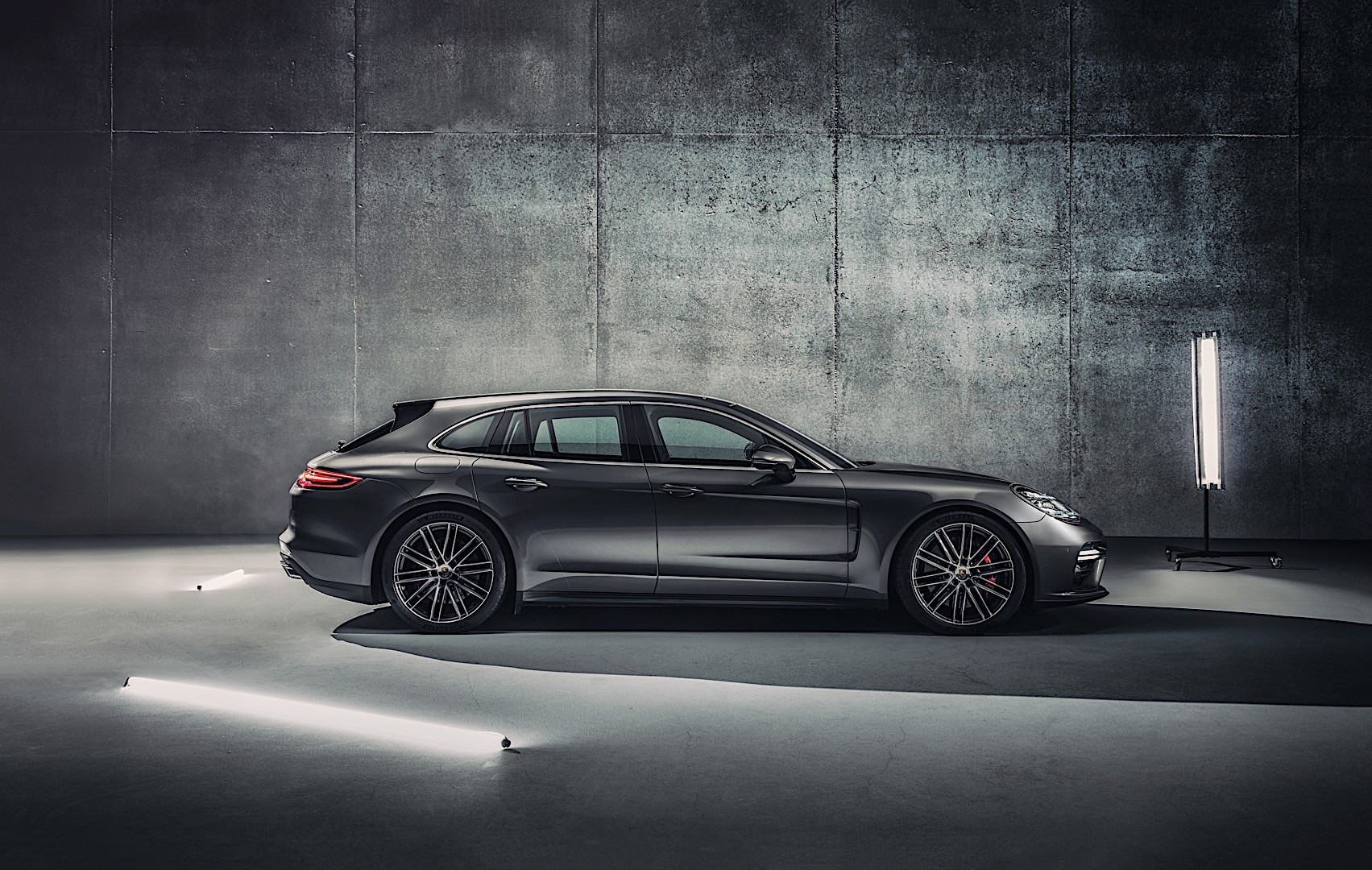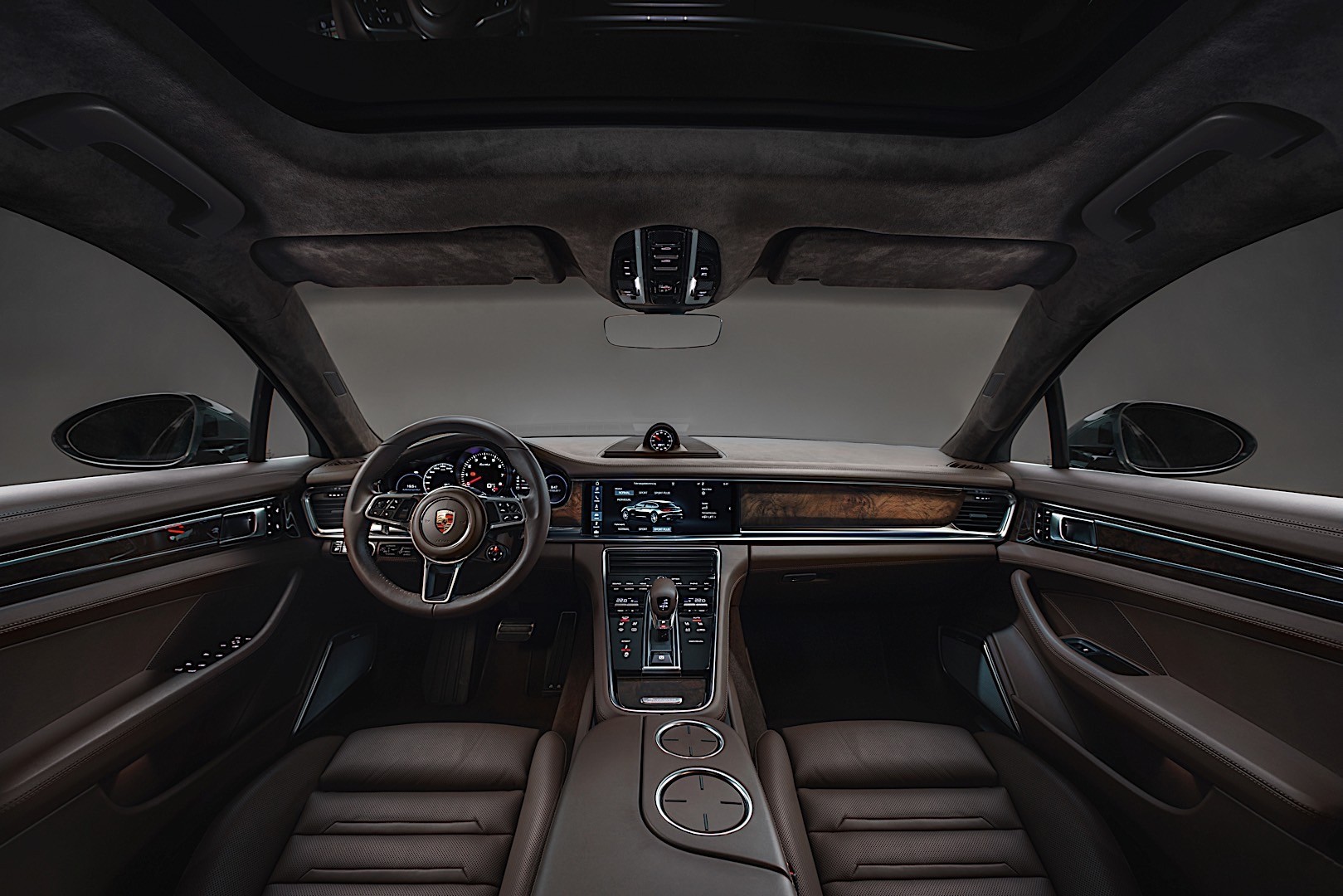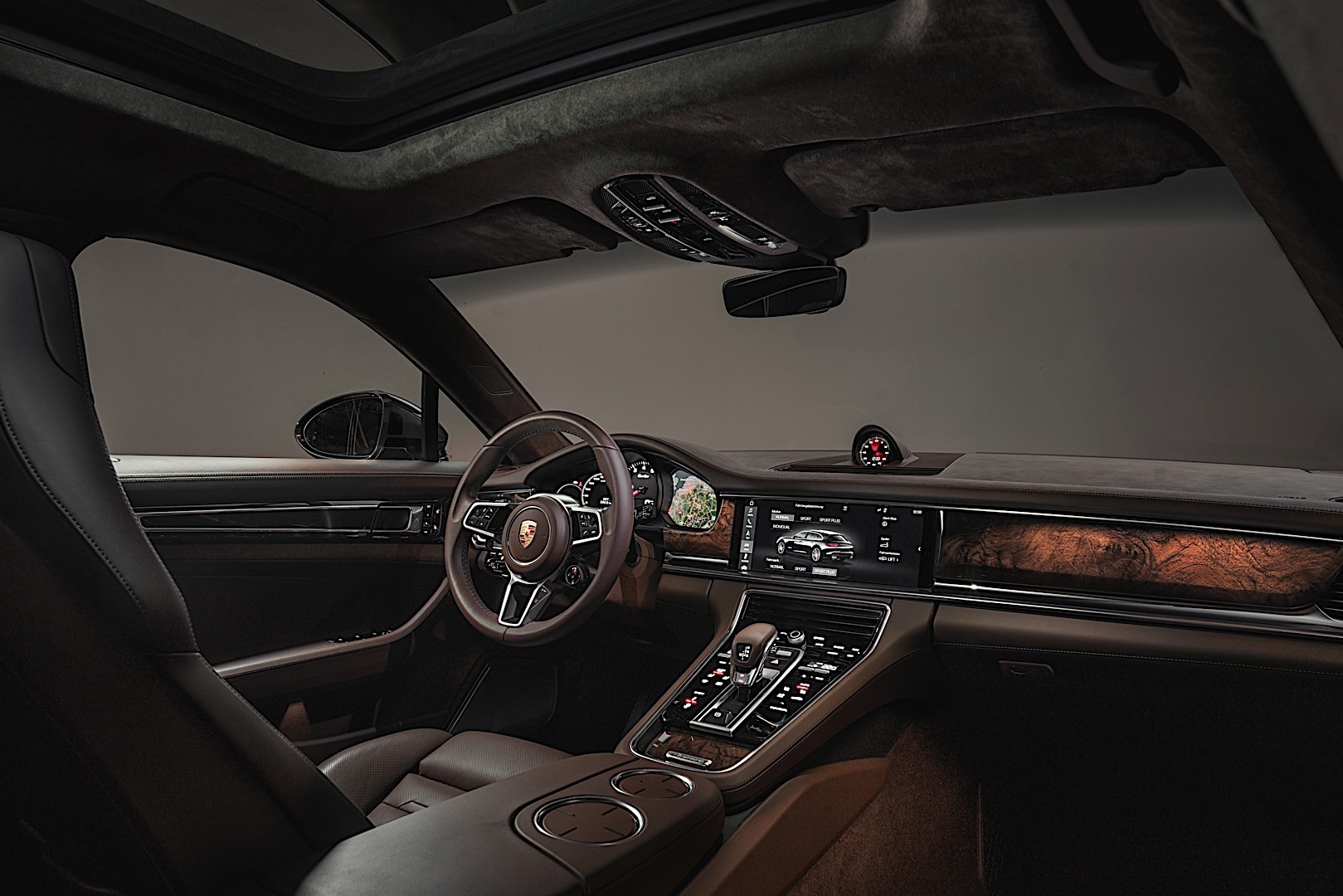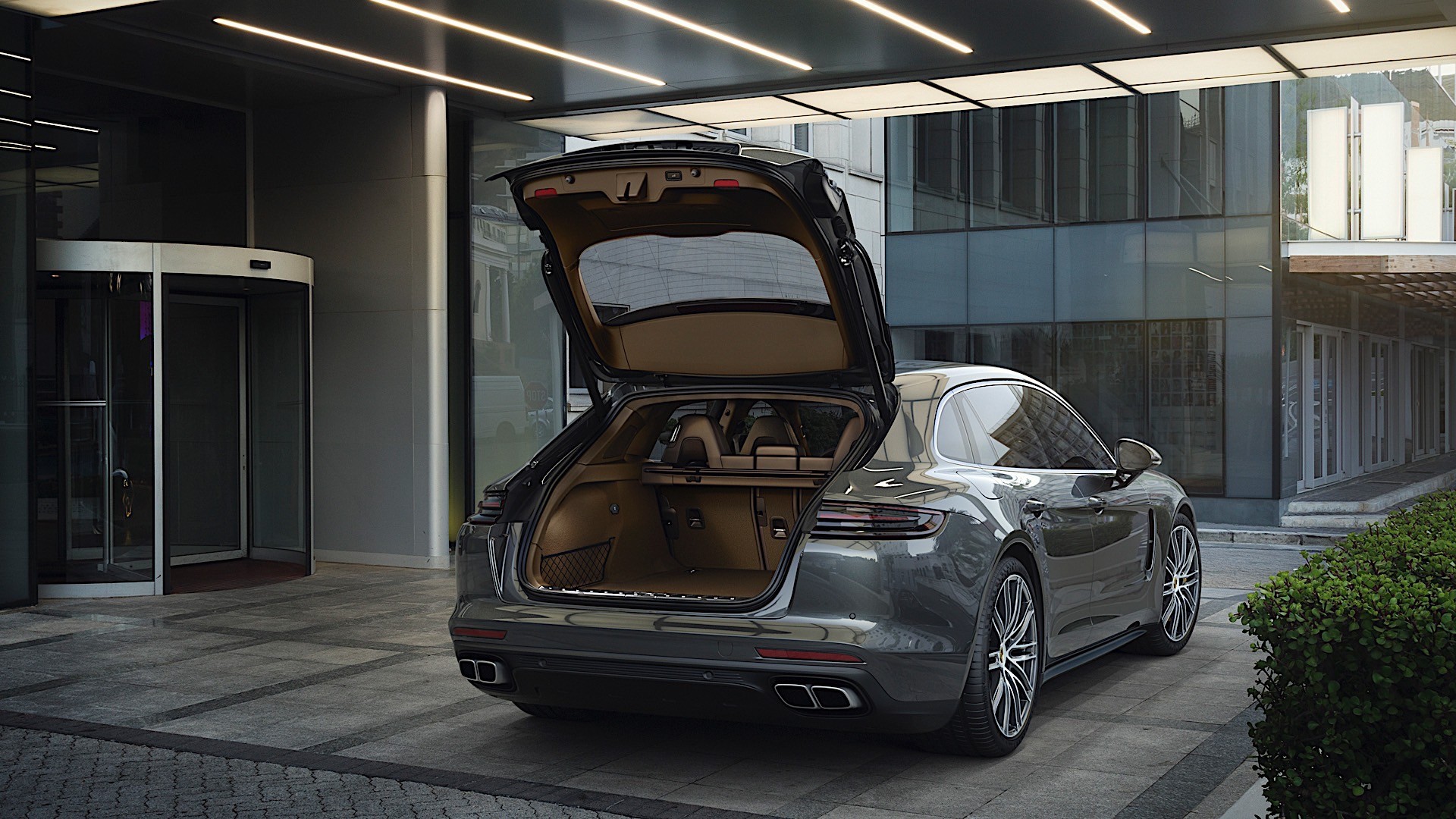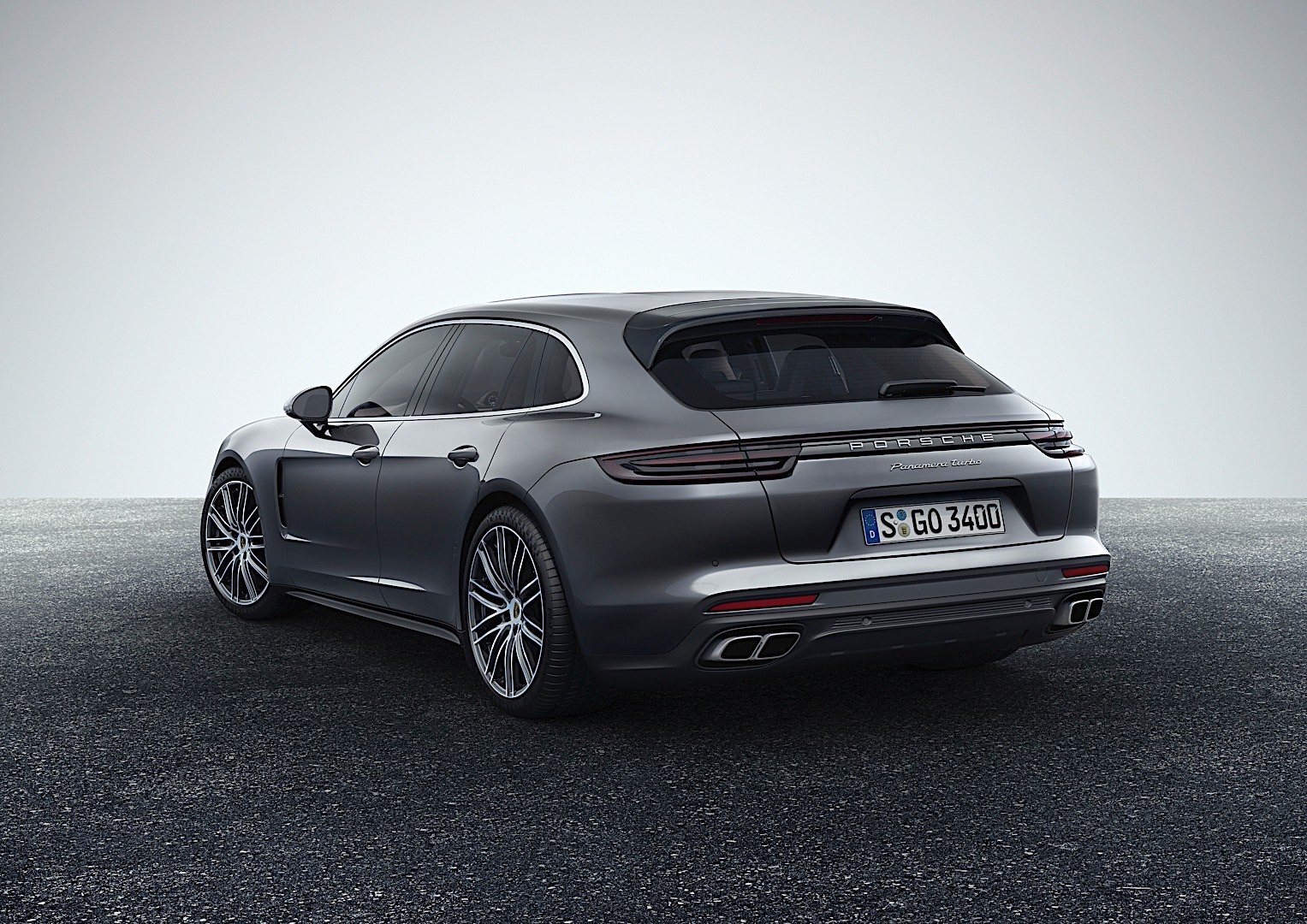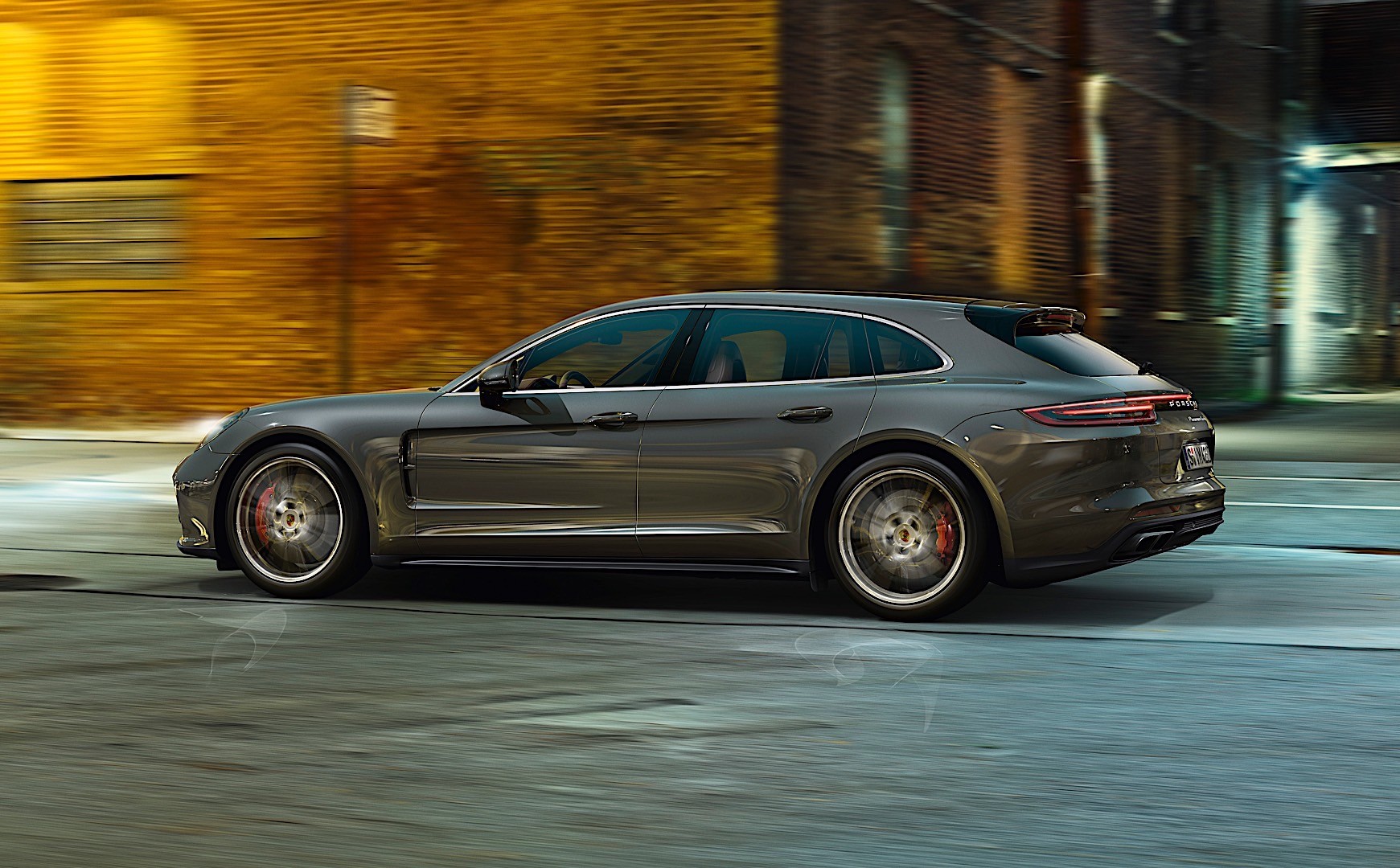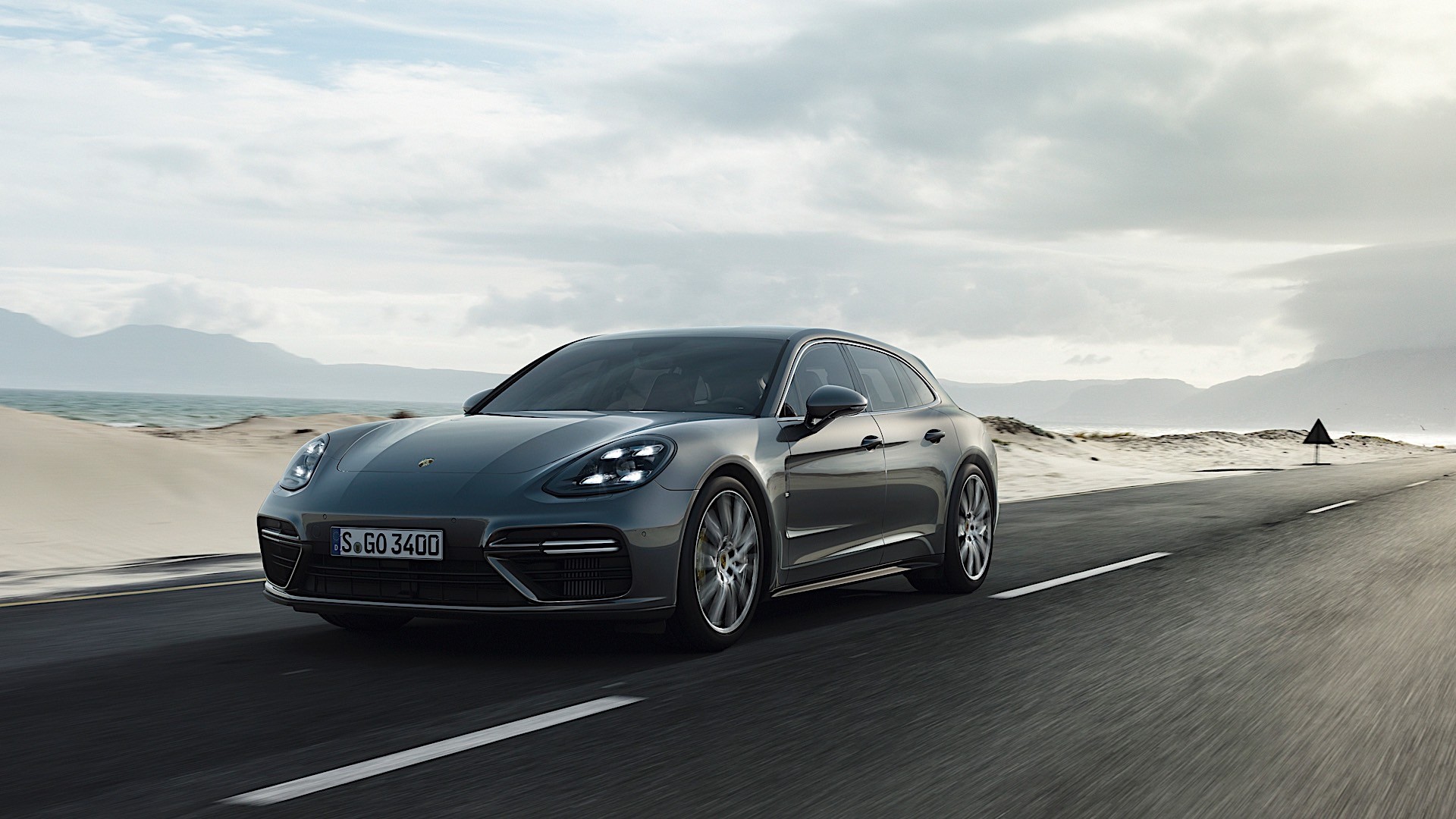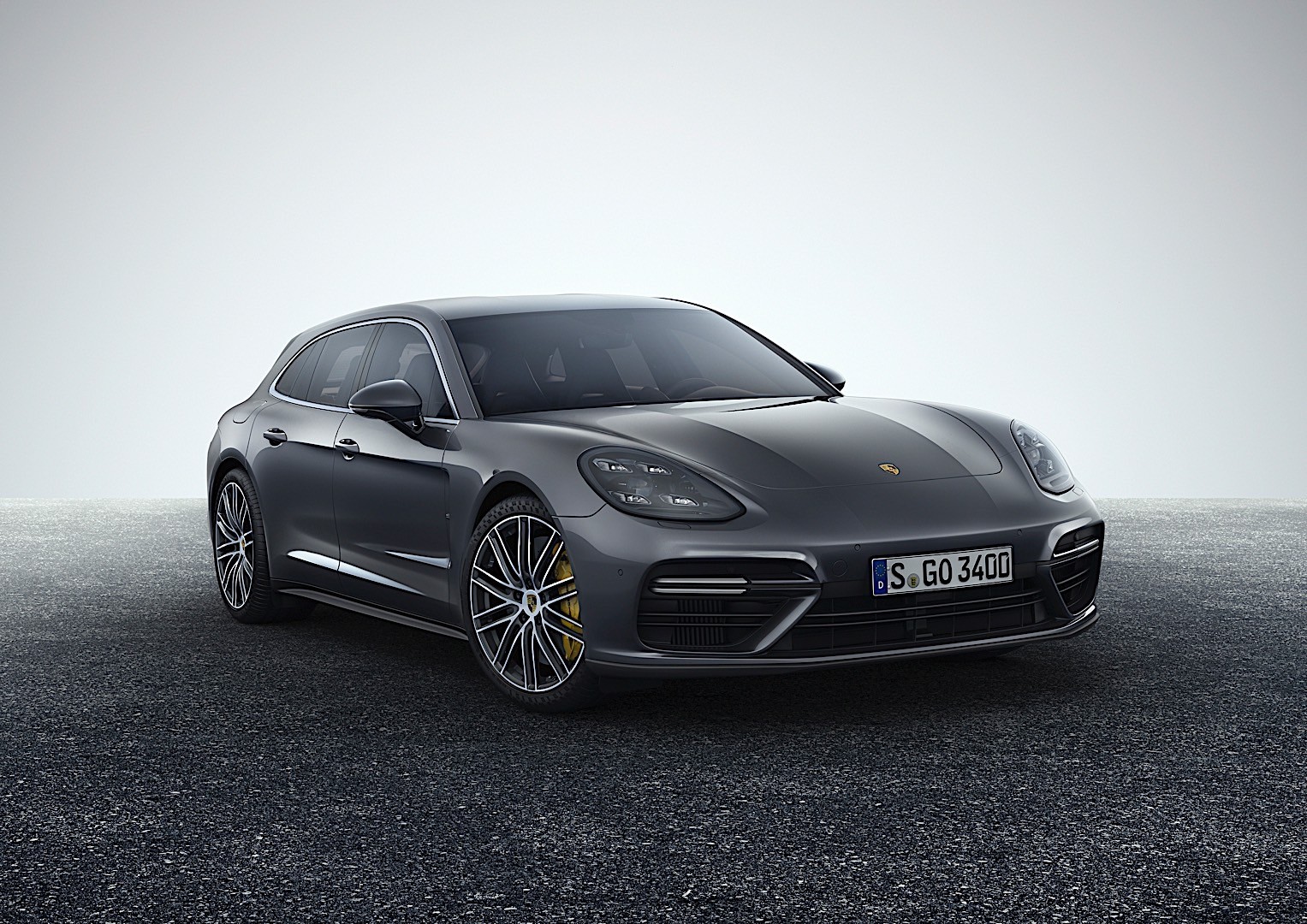(2018 – 2020) Porsche Panamera Turbo Sport Turismo – The Ultimate Guide
The Porsche Panamera Turbo also got the Sport Turismo body option in 2018. It got all the same powerful petrol engine as the sedan version of the Panamera Turbo. Its 4.0-litre biturbo V8 develops 404 kW / 550 hp (at 5,750 rpm) and a maximum torque of 770 Nm (between 1,960 and 4,500 rpm). It has 30 hp more power than the previous model, and its maximum torque has been increased by 70 Nm. The eight-cylinder engine accelerates the Panamera Turbo to 100 km/h in 3.8 seconds; with the Sport Chrono Package the sprint time is just 3.6 seconds. The Porsche can reach a top speed of 306 km/h. These are impressive figures that illustrate just how easily the engine can propel the Panamera with its power-to-weight ratio of just 3.6 kg/hp. These extraordinary performance figures contrast with lower combined fuel consumption figures which, at 9.4 – 9.3 l/100 km, are up to 1.1 l/100 km less than that of the previous model (New European Driving Cycle or NEDC). These figures equate to CO2 emissions of 214 – 212 g/km.
Porsche uses complex twin-scroll turbochargers to supply compressed air to the V8’s combustion chambers. The two counter-rotating chargers produce maximum torque figures at very low engine speeds. The Panamera Turbo is also the first Porsche to be equipped with the new adaptive cylinder control in its engine. In part-load operation, the system temporarily and imperceptibly turns the eight-cylinder into a four-cylinder engine. This reduces fuel consumption by up to 30 per cent, depending on power demand in the four-cylinder phases.
The Panamera Turbo Sport Turismo is 5,049 millimetres long, 1,428 millimetres high and 1,937 millimetres wide, while the large wheelbase spans 2,950 millimetres. The silhouette is further characterised by short body overhangs and large wheels measuring up to 21 inches. Beginning from the B-pillars, that is, from the start of the rear doors, the Sport Turismo features a completely unique rear design. Above the pronounced shoulder, an elongated window line and equally long roof contour lend the vehicle its striking appearance. At the rear, the roof drops away much less dramatically than the window line, resulting in a prominent and distinctive D-pillar which transitions into the shoulder section in a coupé-like fashion.
It is a practical five-seater with lots of room, a great design and stonking performance.
Pictures
Press Release
Porsche is expanding the Panamera family with the addition of a new body version: The Porsche Panamera Sport Turismo is celebrating its world première at the 2017 Geneva Motor Show, where five different versions will be on display: Panamera 4, Panamera 4S, Panamera 4S Diesel, Panamera 4 E-Hybrid and Panamera Turbo. Based on the successful sports saloon, the new version once again makes a profound statement in the luxury segment with its unmistakeable design. At the same time, the Sport Turismo, with up to 404 kW/550 hp, is more versatile than any other model in its class. With a large tailgate, low loading edge, increased luggage compartment volume and a 4+1 seating concept, the new Panamera model offers the perfect combination of everyday usability and maximum flexibility. “For Porsche, the Panamera Sport Turismo is a step forwards into a new segment, but retains all of those values and attributes that are characteristic of Porsche”, says Michael Mauer, Director of Style Porsche.
From a technological and design perspective, the Sport Turismo utilises all the innovations introduced with the brand new Panamera model line launched only last year. These include the digital Porsche Advanced Cockpit, pioneering assistance systems such as Porsche InnoDrive, including adaptive cruise control, chassis systems such as rear axle steering, the Porsche Dynamic Chassis Control (PDCC Sport) electronic roll stabilisation system and powerful powertrains. In addition, all Panamera Sport Turismo vehicles are equipped with Porsche Traction Management (PTM) – an active all-wheel drive system with electronically controlled multi-plate clutch – as standard. As of the S models, adaptive air suspension with three-chamber technology is also supplied as standard.
The design and concept of an all-round sportscar
Just like the coupé-style Porsche Panamera sports saloon, the Sport Turismo is characterised by its very dynamic proportions – a perfect reflection of the Porsche design DNA. The vehicle is 5,049 millimetres long, 1,428 millimetres high and 1,937 millimetres wide, while the large wheelbase spans 2,950 millimetres. The silhouette is further characterised by short body overhangs and large wheels measuring up to 21 inches.
Beginning from the B-pillars, that is, from the start of the rear doors, the Sport Turismo features a completely unique rear design. Above the pronounced shoulder, an elongated window line and equally long roof contour lend the vehicle its striking appearance. At the rear, the roof drops away much less dramatically than the window line, resulting in a prominent and distinctive D-pillar which transitions into the shoulder section in a coupé-like fashion.
First adaptively extendible roof spoiler in the segment
At the top of the vehicle, the roof extends into an adaptive spoiler. The angle of the roof spoiler is set in three stages depending on the driving situation and selected vehicle settings, and generates an additional downforce of up to 50 kg on the rear axle.
Up to a speed of 170 km/h, the aerodynamic guide element – a central system component of the Porsche Active Aerodynamics (PAA) – stays in its retracted position with an angle of minus seven degrees, which reduces drag and thus optimises fuel consumption.
Above 170 km/h, the roof spoiler automatically moves to the performance position with an angle of plus one degree, thereby increasing driving stability and lateral dynamics. When in the Sport and Sport Plus driving modes, the roof spoiler automatically moves to the performance position at speeds of 90 km/h upwards. PAA also provides active assistance by adapting the roof spoiler’s angle of inclination to plus 26 degrees when the panoramic sliding roof is open at a speed of 90 km/h or above. In this case, the spoiler helps to minimise wind noise.
Three seats in redesigned rear
The new Sport Turismo is the first Panamera to feature three rear seats. The two outside seats take the form of individual seats – in keeping with the model line’s claim for sporty performance with maximum passenger comfort – thereby producing a 2+1 configuration at the rear. As an option, the Porsche Panamera Sport Turismo is also available in a four-seat configuration with two electrically adjustable individual seats at the rear.
The raised roof line of the Sport Turismo allows for easier entry and exit at the rear of the vehicle and ensures greater head clearance. The usability of the luggage compartment benefits from the wide opening tailgate, which is electrically operated as standard, and a loading edge height of just 628 millimetres. Measured to the upper edge of the rear seats, the up to 520-litre storage capacity of the Sport Turismo (Panamera 4 E-Hybrid Sport Turismo: 425 litres) betters that of the sports saloon by 20 litres. When loaded up to roof level and with the rear seats folded down, the gains amount to around 50 litres. The backrests of the three rear seats can be folded down together or individually (in a 40:20:40 split) and are unlocked electrically from the luggage compartment. When all of the backrests are folded down, the loading floor is virtually level. In this case, the storage volume is expanded to up to 1,390 litres (Panamera 4 E-Hybrid Sport Turismo: 1,295 litres).
A luggage compartment management system is available on request for the Porsche Panamera Sport Turismo. Among other things, this variable system for secure transport includes two rails integrated in the loading floor, four lashing points and a luggage compartment partition net. An optional 230-V electrical socket can also be provided in the luggage compartment.
Five engines at market launch
The Porsche Panamera Sport Turismo is available to order now. The European market launch is scheduled for October 7, 2017, with the other markets following in early November. The new Porsche will be available with five engines that are already used in the sports saloon. Prices in Germany start at 97,557 euro for the Panamera 4 Sport Turismo (243 kW/330 hp), 112,075 euro for the Panamera 4 E-Hybrid Sport Turismo (340 kW/462 hp system power), 120,048 euro for the Panamera 4S Sport Turismo (324 kW/440 hp), 123,975 euro for the Panamera 4S Diesel Sport Turismo (310 kW/422 hp) and 158,604 euro for the Panamera Turbo Sport Turismo (404 kW/550 hp), all including VAT.


